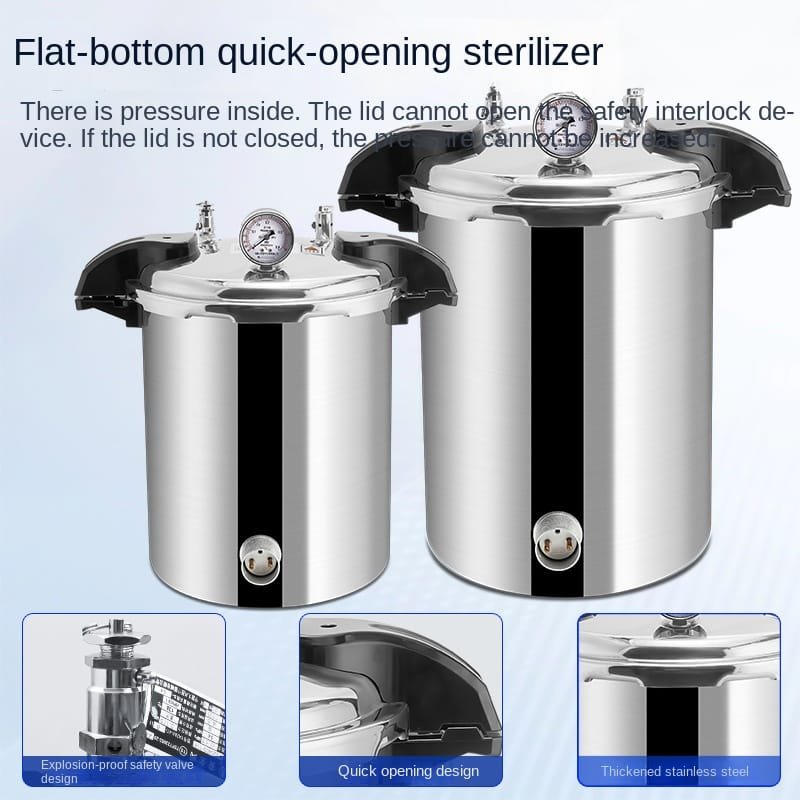
Verify that the autoclave water reservoir contains distilled water up to the advised level.
Examine the chamber for any signs of debris or residue and clean the chamber if you find any contaminants.
Sterilization Preparation: Clean items before placing them into autoclave-compatible packaging such as bags or containers.
Organize items inside the chamber with adequate space between them to ensure proper steam movement. Avoid overloading.
Protect against spills by storing any potentially leaking liquids or items inside secondary containers.
Properly seal the door to maintain necessary pressure throughout the cycle.
The correct cycle must be chosen depending on whether the items to be sterilized consist of liquids, solids or wrapped goods.
Refer to the manufacturer’s recommendations to set the correct temperature and pressure levels.
Adjust the timer settings based on both the types and amount of items that need sterilization.
Activate the Autoclave by pressing the start button which initiates the sterilization cycle.
The process requires continuous observation of the pressure and temperature gauges to confirm they achieve the correct levels.
Stay alert to any alarms or error messages because they signal potential issues.
Do not open the door until the chamber pressure reaches zero.
To prevent burns from hot steam wear heat-resistant gloves when you open the door.
Handle items only after they have thoroughly cooled down. Use autoclave tape or indicators to verify sterilization completion.
After each use clean the chamber by getting rid of any water and debris.
Maintain hygiene by wiping the autoclave’s interior and exterior surfaces.
Examine the door gasket and seals alongside other components for wear signs to replace them when needed.
Correct operation of an autoclave achieves both effective sterilization results and extends the equipment’s lifespan. Consistent and reliable results can be achieved by following these steps which include preparation, loading, cycle settings, monitoring and post-cycle procedures. The manufacturer’s manual contains all necessary instructions and safety guidelines which should always be consulted.
The duration of the autoclave cycle depends on the items being sterilized although most cycles last between 15 and 60 minutes.
No, liquids and solids require different cycles. To achieve effective sterilization results you should always process liquids and solids in separate cycles.
Inspect both the water levels along with the heating element and steam lines. If the issue persists, contact a technician.
Releasing hot steam when you open the autoclave prematurely will cause injury because the cycle has not yet finished. Do not open the autoclave until the pressure gauge reads zero.
Every time the autoclave is used perform a cleaning routine on both the chamber and exterior surfaces and schedule a thorough cleaning session every week to prevent residue buildup.
This article delivers detailed instructions for safe and effective autoclave operation. Please inform me if you want to move on to the next article!
Why Autoclave Is The Best Method Of Sterilization